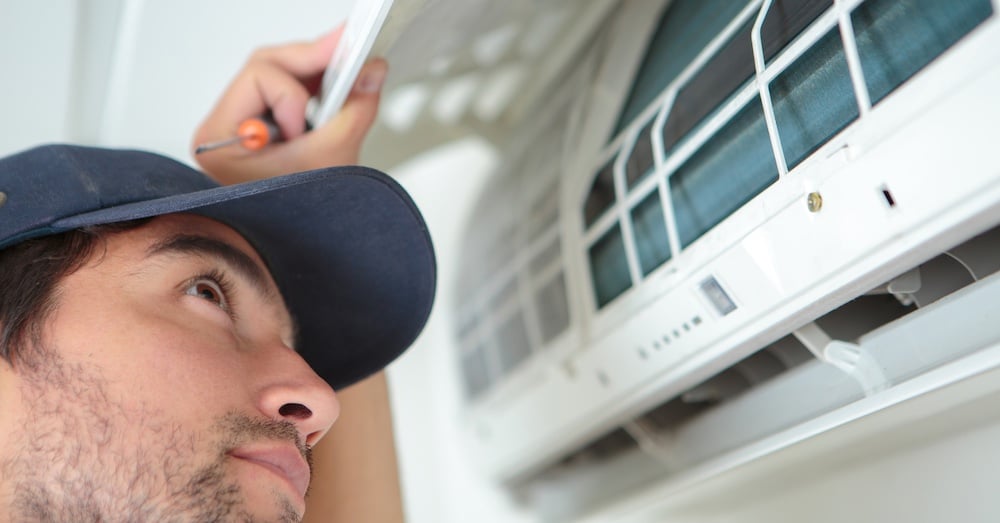
The past few years have seen a rise in “mini-split systems,” ductless heating and cooling systems that act as fantastic alternatives to traditional HVAC technology. Although many industries—including HVAC manufacturing—took a hit during the COVID-19 pandemic, updated market reports still anticipate significant continued growth in the demand for ductless HVAC systems in the years to come.
While demand can vary on a location and consumer-specific basis, multiple factors suggest HVAC contractors would be wise to open their service offerings to include both ductless HVAC systems as well as traditional systems. To better understand why your HVAC company should consider offering ductless HVAC systems, check out the breakdown below.
What are Ductless HVAC Systems?
When comparing traditional HVAC systems to ductless systems, both are similar because they connect an outdoor heat pump to an indoor air handler via refrigerant and electrical lines. The main difference between the two is that ductless systems don’t require the usual expansive ductwork to distribute cooling and heating efficiently.
Instead, customers can purchase ductless systems as a single-zone unit or a multi-zone system. A single-zone unit consists of one indoor wall-mount unit, where a multi-zone system utilizes multiple wall-mounted units installed throughout the space. Air is directly blown into the space through the ductless wall-mount unit, allowing customers to have more control over the temperature in each room.
These systems are excellent for smaller homes and apartments that don’t require extensive ductwork to heat or cool the home comfortably. While homeowners in areas that see intense summers and winters may not find ductless systems expansive enough to maintain preferred temperatures in their homes, these systems still hold numerous benefits for the right customer. Likewise, adding these ductless systems to your services list can help attract a more expansive customer base that drives overall profit.
When to Go Ductless and When to Go Traditional?
As an HVAC business operator, you want to provide the services your local customers look for the most. Rather than limiting your service offerings to just traditional HVAC solutions, you may want to consider if your local market is in demand for ductless options as well. Here are a few points to consider when deciding whether or not to offer ductless HVAC solutions.
Ductless for Environmentally-Friendly Audiences
Ductless HVAC systems, also known as mini-split systems, can be an appetizing alternative to the environmentally-friendly consumer. With traditional HVAC systems, the extensive ductwork that connects to these systems can account for some pretty steep energy loss. The U.S. Department of Energy states that more than 30% of energy consumption is lost to ductwork, especially in unconditioned spaces such as attics.
In comparison, ductless systems push cooling or heating energy directly into a space through a wall-mount unit, eliminating a loss through the home’s ductwork. Ductless HVAC systems are a great option for small homes and apartments that don’t require significant energy to heat or cool the entire space. Likewise, homeowners who don’t maintain year-long residences, such as retirees, may only need a simple cooling system for warmer times of the year.
Ductless for Old Builds and Small Spaces
The efficiency of a ductless air system all depends on the home it operates in. New builds that come readily equipped with ductwork will be more cost-effective to install a traditional central HVAC system. It may be more cost-effective for older homes and smaller spaces to install a ductless split system, as the pricey installation of ductwork and supporting equipment may not entice a customer.
Bear in mind, larger homes may not be the best fit for a ductless air system, as they only offer a steady stream of cooling and heating for the immediate location each indoor unit is located in. For larger homes with multiple rooms, traditional HVAC systems may be a more efficient heating and cooling option.
Traditional for Historically Cold Areas
For those HVAC company operators located in areas with intense winters, you may want to consider a few things before offering ductless systems. While there are ductless heating options that produce a usable amount of warm air once temperatures drop, ductless systems have been known not to perform as well as traditional systems in extreme temperatures. For areas that see below-freezing temperatures for days on end, be sure you stick to offering fuel-based backups and traditional HVAC heating systems.
Ductless for Increased Maintenance Agreements & Warranties
Ductless HVAC systems tend to require a bit more attention than traditional HVAC units. Monthly cleanings will need to be completed to avoid future malfunction and preserve the lifespan of the unit. For HVAC company operators, take this as an opportunity to offer maintenance agreements for ductless systems to help customers stay on top of peak system performance and boost overall revenue. This could also be a good segue into providing an extended warranty on the product as well.
Help Customers Make an Informed Choice
You can only help customers make an informed choice if you’re able to provide them with two HVAC options. If you’ve got customers trying to decide between a ductless and traditional system, explain the pros and cons of both types of heating and air options. Also, be sure to explain the benefits of an HVAC extended warranty for the equipment they ultimately select. It will give them peace of mind and potentially save them hundreds or thousands of dollars in the event of equipment failure.
Nick Ahrens
National Account Manager






